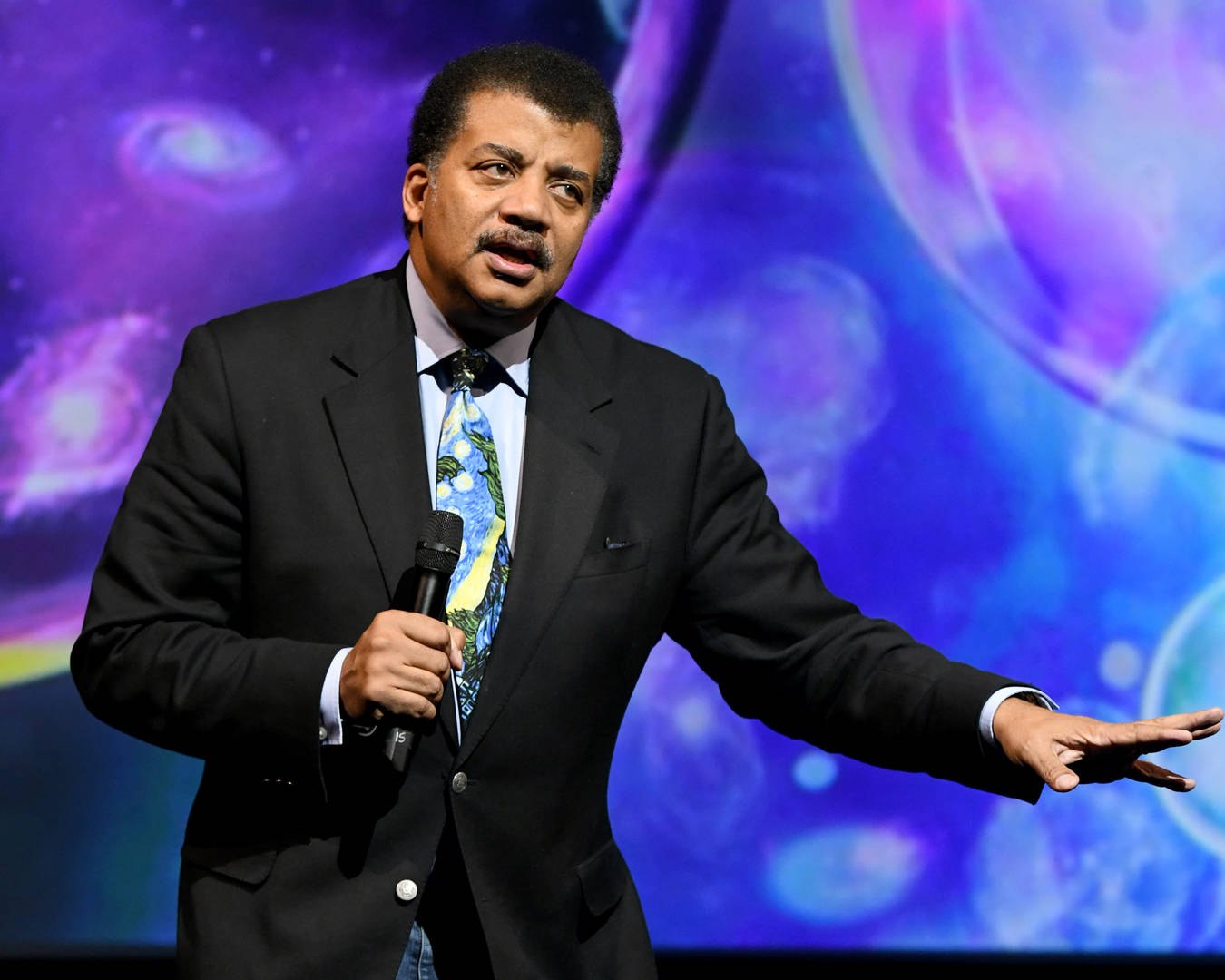

Story
Neil deGrasse Tyson Warns An Asteroid May Hit Earth One Day Before Election
Popular scientist Neil deGrasse Tyson says a small asteroid could collide with the Earth one day before election day in November. It is too small to bring any danger with its impact.
 Craig Barritt / Getty Images
Craig Barritt / Getty Images
“Asteroid 2018VP1, a refrigerator-sized space-rock, is hurtling towards us at more than 25,000 mi/hr. It may buzz-cut Earth on Nov. 2, the day before the Presidential Election,” Tyson warned on Instagram, Saturday. “But it’s not big enough to cause harm. So if the World ends in 2020, it won’t be the fault of the Universe.”
NASA has already identified the asteroid and says it has less than a one-percent chance to crack the Earth’s atmosphere. “Asteroid 2018VP1 is very small, approx. 6.5 feet, and poses no threat to Earth! It currently has a 0.41% chance of entering our planet’s atmosphere, but if it did, it would disintegrate due to its extremely small size,” the organization said.
Regardless of whether the asteroid breaks the Earth’s atmosphere, Americans will still be able to safely vote the following day.
Tyson is hosting a new show on Fox titled Cosmos: Possible Worlds. The show is a follow-up to the 2014 television series Cosmos: A Spacetime Odyssey, which Tyson also hosted. The show premiered on March 9, 2020.
[Via]
Stay updated! Click the Google News follow button for more news and updates.
Follow on Google NewsStory
Pete Miller Explores Duality on “The Dazzling Kimberly”

Pete Miller’s ‘The Dazzling Kimberly’ is a profound exploration of the intricacies of human emotion and the complexity of our relationships. Through its narrative, the song delves deep into the heart of love, loss, and the paths we choose in life. The protagonist’s journey of self-reflection and contemplation, sparked by the enigmatic Kimberly, serves as a mirror to our own experiences with love and the often painful lessons that come with it.
“The Dazzling Kimberly” is a poignant song that narrates the story of two twins embroiled in conflict, who are brought together and eventually reconciled by their interactions with a mystical figure named Kimberly. This song, with its rich narrative and allusions, particularly to the biblical story of Jacob and Esau, offers a layered exploration of themes such as rivalry, redemption, and the ephemeral nature of life and relationships.
The song opens with a vivid depiction of one twin’s sense of guilt and moral ambiguity, contrasting his own cunning with his twin’s straightforward approach. This internal conflict sets the stage for the entrance of Kimberly, a figure whose very existence seems otherworldly, serving as a catalyst for change and reflection in the twins’ lives.
Kimberly, characterized by her wisdom and almost supernatural presence, challenges the narrator to reconsider his values, suggesting that victories won through cunning lack the essence of true love and fulfillment. Her influence is profound, guiding the twins towards a reconciliation that seemed impossible before her intervention.
The chorus of the song encapsulates the narrator’s deep yearning and the transformative impact Kimberly has had on his life. It questions the value of freedom and the significance of their bond, highlighting the impermanence of life through the metaphor of fading air and shifting sands.
The resolution of the twins’ conflict, prompted by Kimberly’s disappearance (or passing), symbolizes a newfound maturity and understanding. The once-contentious land becomes a symbol of their shared heritage and reconciliation, underscoring the message that love and unity are more valuable than any material possession or victory.
The allusion to Jacob and Esau provides a biblical backdrop to this tale of rivalry and reconciliation, enriching the narrative with layers of meaning and moral questioning. Just as Jacob and Esau reconcile after years of conflict, so do the twins, guided by the ethereal and loving presence of Kimberly.
The song’s melancholic yet hopeful tone captures the duality of human experience—the longing for what was and the hope for what could be. The moods and themes you’ve described, from melancholy and contemplation to love, regret, and redemption, underscore the universal struggle with fate and the desire for moral clarity and closure.
For further thematic exploration, the works of Leonard Cohen, particularly for their spiritual and existential undertones, or the poetic narratives of Bob Dylan, might resonate with the themes of “The Dazzling Kimberly.” Both artists adeptly weave complex human emotions with broader philosophical and spiritual questions, much like Pete Miller does in this song.
–Ralph Grossman
Story
Yung Miami Unveils Exciting “Yams” Era in a Dazzling Comeback Trail, Are You Ready for the Yams Revolution

Yung Miami Unveils Exciting “Yams” Era in a Dazzling Comeback Trail, Are You Ready for the Yams Revolution
-

 Artist Spotlight22 hours ago
Artist Spotlight22 hours agoA Conversation with Singer Songwriter Eddy Mann
-

 Artist Spotlight22 hours ago
Artist Spotlight22 hours agoClare Easdown ignites shadows of stigma with her single “STIGMA ENIGMA”
-

 Artist Spotlight20 hours ago
Artist Spotlight20 hours agoKAT shares intimate vulnerability in her new single, “Same Mistake”
-

 Artist Spotlight3 hours ago
Artist Spotlight3 hours agoUnveiling “Dracophobia” – Shriving Drawers’ Spellbinding Exploration of Disorganized Attachment Anxiety
-

 Artist Spotlight24 hours ago
Artist Spotlight24 hours agoCAT CORK evokes an introspective odyssey with “Disappear”
-

 Artist Spotlight3 hours ago
Artist Spotlight3 hours agoBridgitte’s “Love Potion” Promises to Cast a Spell of Love and Connection
-

 Artist Spotlight2 hours ago
Artist Spotlight2 hours agoThomson Unveils Mesmerizing Single “Beaconsfield”
-

 Artist Spotlight18 hours ago
Artist Spotlight18 hours agoSam Caldwell delivers his soulful serenade with “Dreams Between”

